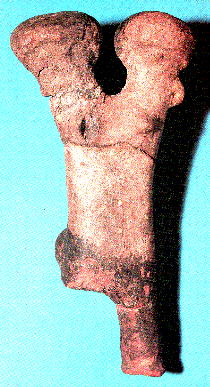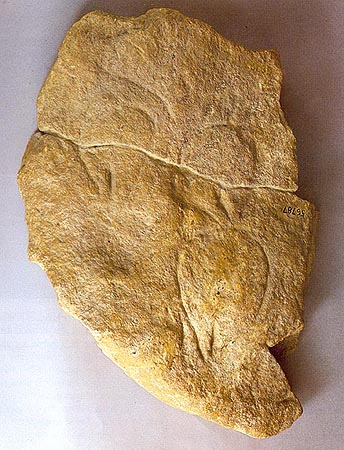
Syro-Hittite, 2000 - 1700 B.C.
Clay, 5 3/4 x 1 3/4 in. (14.8 x 4.6 cm).
Gift of Dr. and Mrs. Boone M. Bowen. 1968.226
The first form of sculpture in the Near East consisted of handmade clay figurines. Male figurines, depicting clothed individuals, were not very frequent, and the vast majority of figurines represented nude females.
These nude female representations in clay appear during the Neolithic period and in excavation levels dating from the third to first millennia B.C., when large numbers were produced in Mesopotamia and Iran alike, and especially in the kingdom of Elam.
Being handmade or mold-made, many were of a similar type and some of them must have been mass-produced.
These figurines were often fashioned with hands joined or supporting the breasts. Their navel was generally represented, and the pubic triangle was very well delineated.
They may have represented deities, like Ishtar as the goddess of sexual love, or worshipers.
While some of these figurines were probably meant for magic rituals, many of them may have been used as votive offerings related to fertility.
Fertility was an essential concept in the life of ancient societies, and all the different aspects of religion and culture were oriented towards promoting it.
For people depending on agriculture, survival was not only based on the fecundity of the human mother but also on the fruitfulness of the land.















 Hierbij stond het volgende bijschrift: Gegraveerde vulva, begin laat-paleolithicum, Aurignacien. Musée National de la Préhistorie, Les Eyzies.
Hierbij stond het volgende bijschrift: Gegraveerde vulva, begin laat-paleolithicum, Aurignacien. Musée National de la Préhistorie, Les Eyzies.

 In elk geval bedankt voor de foto's.
In elk geval bedankt voor de foto's.



























